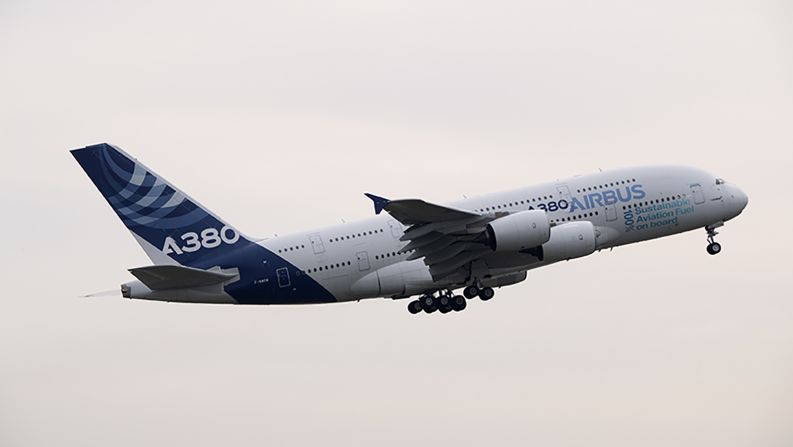Airbus has announced it is developing a hydrogen-powered fuel cell engine – and that it plans to test it on the largest commercial airplane ever to take to the skies.
The French aviation giant revealed at Airbus Summit 2022 on November 30 that it will mount the engine between the wings and the tail of a modified A380 superjumbo. Test flights are estimated for 2026, as part of the Airbus ZEROe initiative to launch a zero-emission aircraft by 2035.
“In terms of aerodynamics, the A380 is a very stable aircraft. So the pod attached to the rear fuselage via the stub doesn’t pose much of an issue,” said Mathias Andriamisaina, head of ZEROe demonstrators and tests at Airbus, in a statement.
Airbus had previously revealed concept designs for an aircraft utilizing liquid hydrogen fuel and combustion engines, but vice president of Zero-Emission Aircraft Glenn Llewellyn suggested fuel cells alone might be sufficient to power smaller commercial aircraft.
The engine uses fuel cells to convert the hydrogen into electricity, which then powers a propeller. “At scale, and if the technology targets were achieved, fuel cell engines may be able to power a 100-passenger aircraft with a range of approximately 1,000 nautical miles,” he said.

The journey to decarbonize air travel
Hydrogen has long been touted as a sustainable alternative to traditional jet fuel, either as a combustible fuel or used to generate electricity via fuel cells. The aviation industry produces 2.8% of global CO2 emissions but it faces harder challenges than other sectors in decarbonizing itself, and progress has been slow.
While hydrogen-powered aircraft have been in development since the mid-20th Century, they have faced significant obstacles, mainly hydrogen’s low energy density compared to kerosene, and the latter’s availability and historically low price.
The infrastructure required to produce and distribute hydrogen is also an issue. At Airbus Summit, Airbus boss Guillaume Faury warned that this was “a big concern” and it could derail the company’s plans to introduce a hydrogen-powered aircraft by 2035.

But hydrogen could become a key asset in commercial aviation even before entirely new aircraft based around it are developed. Days before Airbus’ announcement, Rolls-Royce and budget airline EasyJet said they had successfully converted a regular airplane engine to run on liquid hydrogen fuel — a world first, they claim.
The ground test involved a type of Rolls-Royce engine currently used in commercial and military airplanes, and a second test is already planned. Next, the trial will expand to a Rolls-Royce Pearl 15 engine, which is used to power Bombardier business jets capable of long-haul flight.

Future fuel
The fuel for Rolls-Royce’s test was sourced from wind and tidal energy, an example of “green” hydrogen.
Green hydrogen is commonly derived via the electrolysis of water – using electricity to separate water into hydrogen and oxygen – and using renewably sourced electricity to do so. “Gray” hydrogen uses non-renewable electricity, while “blue” hydrogen is similar to gray, but captures most of the carbon emitted in production. Green hydrogen is considered the cleanest option.
How the hydrogen is utilized also creates a different footprint. Burning liquid hydrogen in the open-air releases a small amount of greenhouse gas nitrous oxide. Using green hydrogen to generate electricity in a fuel cell, however, emits only water and warm air.
The next decade will reveal which of the hydrogen technologies will take off. Either would be a positive step in securing the long-term viability of low-carbon air travel.

















